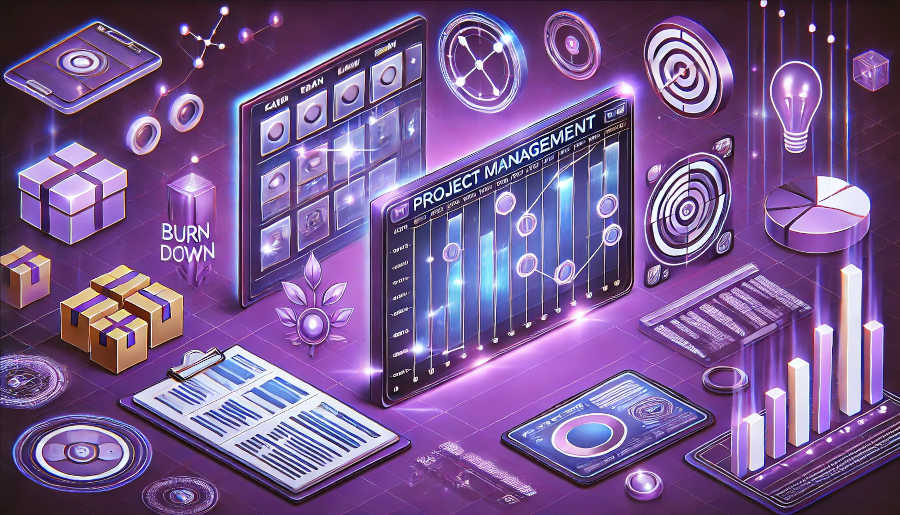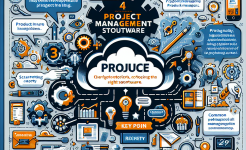IPD (Integrated Product Development) is a comprehensive product development framework that emphasizes cross - functional collaboration, concurrent engineering, and early market and customer focus. Risk management, on the other hand, is an essential process for identifying, assessing, and mitigating potential threats that could derail a project. The IPD flowchart provides a structured roadmap for the product development process, while risk management ensures that the journey along this roadmap is as smooth as possible. Understanding the relationship between the IPD flowchart and risk management is crucial for the successful execution of product development projects.
The IPD flowchart typically consists of multiple phases, from concept generation to product launch. Each phase has specific goals, deliverables, and activities. Risk management, in this context, is not an isolated activity but is intertwined with every step of the IPD process. By integrating risk management into the IPD flowchart, organizations can proactively address potential issues, reduce uncertainties, and increase the likelihood of delivering a successful product. This article will explore the relationship between the two in detail and propose effective response strategies.
The Intersection of IPD Flowchart and Risk Management
Concept Phase
The concept phase of the IPD flowchart is where the initial ideas for a product are generated. This is also a critical stage for risk identification. At this point, market risks such as changing customer needs, emerging competitors, and technological uncertainties are prevalent. For example, a new technology that seems promising during concept generation may turn out to be unfeasible or too costly to implement in the later stages.
Risk management in the concept phase involves conducting market research to understand customer preferences and competitor strategies. This helps in assessing the viability of the product concept. Additionally, technology scouting can be carried out to identify potential technological risks. By doing so, teams can either modify the concept to reduce risks or develop contingency plans. For instance, if a particular technology is identified as high - risk, the team may consider alternative technologies or allocate additional resources for further research and development.
The concept phase also sets the foundation for the entire product development process. If risks are not properly addressed here, they can snowball into larger problems in subsequent phases. For example, a poorly defined product concept due to insufficient understanding of market risks may lead to rework, delays, and increased costs during the development phase.
Design Phase
In the design phase of the IPD flowchart, the focus is on translating the product concept into a detailed design. This phase is fraught with technical risks, such as design flaws, compatibility issues, and manufacturability problems. A design that looks good on paper may not be practical to manufacture, leading to production delays and cost overruns.
Risk management in the design phase requires close collaboration between different engineering disciplines. For example, mechanical engineers need to work with electrical engineers to ensure that all components are compatible. Design reviews are an important risk management tool during this phase. By conducting thorough design reviews, potential flaws can be identified early, and corrective actions can be taken.
Moreover, simulation and prototyping are used to test the design and assess its performance under different conditions. This helps in reducing the risk of design failures during the actual production phase. For instance, a software prototype can be used to test the user interface and functionality, allowing developers to make necessary adjustments before the final product is developed.
Development Phase
The development phase is where the product starts to take shape. It involves activities such as component development, system integration, and testing. This phase is exposed to risks related to schedule, quality, and resource availability. Delays in component development can hold up the entire system integration process, and quality issues discovered during testing may require significant rework.
Risk management in the development phase includes setting up a detailed project schedule with milestones and deadlines. Regular progress monitoring helps in identifying any deviations from the schedule early. Resource allocation is also crucial. Ensuring that the right people with the necessary skills are available at the right time can prevent resource - related risks.
Quality control measures, such as in - process inspections and unit testing, are essential to catch quality issues early. By implementing a comprehensive risk management plan in the development phase, organizations can ensure that the product is developed on time, within budget, and meets the required quality standards.
Response Strategies for Aligning IPD Flowchart and Risk Management

Proactive Risk Identification
To effectively align risk management with the IPD flowchart, proactive risk identification is key. This involves creating a culture within the organization where all team members are encouraged to identify and report potential risks. In each phase of the IPD process, dedicated risk identification sessions can be held. For example, at the start of the design phase, a brainstorming session can be organized to identify all possible technical and design - related risks.
Using checklists and historical data from previous projects can also aid in risk identification. By analyzing past projects, organizations can identify common risks and develop strategies to avoid them. Additionally, involving external stakeholders such as customers, suppliers, and industry experts can provide valuable insights into potential risks. For instance, customers may be able to identify usability risks that the internal team may overlook.
Proactive risk identification allows organizations to address risks before they escalate. This reduces the impact of risks on the product development process and increases the chances of project success.
Risk Assessment and Prioritization
Once risks are identified, they need to be assessed and prioritized. This involves evaluating the likelihood of a risk occurring and the potential impact it would have on the project. A risk matrix can be used to categorize risks based on their probability and impact. For example, a risk with a high probability of occurring and a high impact on the project schedule and cost would be classified as a high - priority risk.
Risk assessment should be an ongoing process throughout the IPD flowchart. As the project progresses, the likelihood and impact of risks may change. For example, a risk that was initially considered low - priority may become high - priority due to changes in the market or technology. By regularly reassessing risks, organizations can allocate resources effectively to address the most critical risks first.
Prioritizing risks helps in focusing the efforts of the risk management team. It ensures that resources are not wasted on addressing minor risks while major threats are left unaddressed.
Risk Mitigation and Contingency Planning
After risks are prioritized, appropriate risk mitigation strategies need to be developed. For low - priority risks, acceptance may be an option, where the organization decides to tolerate the risk. For medium - and high - priority risks, mitigation strategies such as risk avoidance, reduction, or transfer can be employed.
Risk avoidance involves changing the project plan to eliminate the risk altogether. For example, if a particular technology is identified as a high - risk factor, the team may choose to use an alternative technology. Risk reduction strategies aim to lower the likelihood or impact of a risk. This can be achieved through activities such as additional testing, training, or process improvements. Risk transfer may involve outsourcing a high - risk activity to a third - party with more expertise or purchasing insurance to cover potential losses.
Contingency planning is also an important part of risk management. In case a risk does occur, having a pre - defined plan in place can minimize the disruption to the project. For example, if there is a risk of a key team member leaving the project, a contingency plan could involve cross - training other team members or having a recruitment plan ready.
Conclusion
The relationship between the IPD flowchart and risk management is symbiotic. The IPD flowchart provides the structure and sequence for product development, while risk management ensures that the process is protected from potential threats. By understanding the intersection of the two at each phase of the IPD process, organizations can develop effective response strategies.
Proactive risk identification, risk assessment and prioritization, and risk mitigation and contingency planning are essential components of aligning risk management with the IPD flowchart. When these strategies are implemented successfully, organizations can enhance the efficiency and effectiveness of their product development projects. They can reduce the likelihood of project failures, improve product quality, and bring products to market faster.
In today's dynamic business environment, where competition is fierce and technological advancements are rapid, integrating risk management into the IPD flowchart is not just an option but a necessity. By doing so, organizations can gain a competitive edge and ensure the long - term success of their product development initiatives. It is crucial for organizations to invest in training their teams to understand the relationship between the IPD flowchart and risk management and to implement the appropriate strategies for effective product development. This will enable them to navigate the complex landscape of product development and deliver products that meet or exceed customer expectations.
ARTICLE TITLE :Relationship and response strategies between IPD flowchart and risk management ,AUTHOR :ITpmlib

















